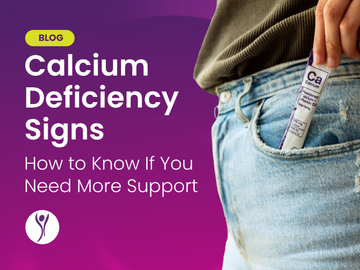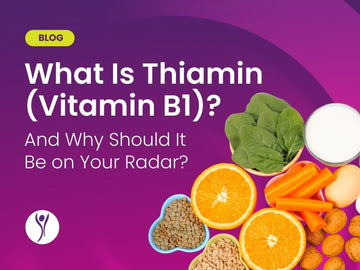How to Understand the New Nutrition Labels Part I: Changes from the FDA
by Anthony Benjamin on Oct 12, 2022

How to Understand the New Nutrition Labels Part I: Changes from the FDA
 In 2020, the Food and Drug Administration (FDA) changed the regulations for the
nutrition and supplements facts panels on nutrition labels. Why? To combat some of the health problems in the US and
provide people with better, realistic solutions.
In 2020, the Food and Drug Administration (FDA) changed the regulations for the
nutrition and supplements facts panels on nutrition labels. Why? To combat some of the health problems in the US and
provide people with better, realistic solutions.
Although it’s already on some packages, the new label will appear on most packaged foods in the United States by January 1, 2021.
At ProCare Health, we know it can be challenging to decipher the new nutrition labels. In this article, we’ll help you understand the recent label changes so that you can make informed decisions during your weight loss journey to a healthier lifestyle.
divided into five different stages: preoperative, surgery, postoperative, recovery, and discharge.
No matter your length of stay, patients have some common questions about what to expect before and after surgery.
Five Principle Guidelines: What Will the New Nutrition Labels Accomplish?
The Dietary Guidelines for Americans (DGA) has five guiding principles for people to follow in their food choices. The new nutrition labels will help people incorporate these guidelines into their everyday routine:
Follow a Healthy Eating Pattern
All food and beverage choices matter – you can’t make healthy choices one day and not the next.
Americans should choose a healthy eating pattern at an appropriate calorie level to achieve and maintain healthy body weight, support nutrient adequacy, and reduce the risk of chronic disease.
Focus on Variety, Nutrient Density, and Amount
To meet nutrient needs within calorie limits, Americans should choose a variety of nutrient-dense foods across all food groups in recommended amounts.
Limit Added Sugars, Saturated Fats, and Sodium
Americans should limit calories from added sugars and saturated fats and reduce sodium intake. In fact, they should follow these suggestions:
- Consume less than 10 percent of calories per day from added sugars
- Consume less than 10 percent of calories per day from saturated fats
- Consume less than 2,300 milligrams (mg) per day of sodium (reduced from 2,400 mg)
Make Healthy Choices
All Americans should shift their focus to healthier foods and beverage choices. Some examples include whole fruits and starchy vegetables.
Support Healthy Eating for All
Everyone can help to create and support healthy eating patterns in homes, schools, work, and communities nationwide.
It takes healthy eating and information in all areas of the community to be healthy – at school, at home, at the doctor’s office, and in the community.
Key Recommendations for Living a Healthy Lifestyle
To make the changes listed above, the DGA recommends healthy eating patterns for all foods and beverages within an appropriate calorie level. A healthy pattern includes:
- A variety of vegetables from all subgroups – dark green, red and orange, legumes, and starchy varieties.
- Fruits – especially whole fruits like blueberries, apples, pears, and grapes.
- Grains – at least half of which are whole grains like whole wheat that are excellent sources of fiber and nutrients.
- Fat-free or low-fat dairy, including milk, yogurt, cheese, and/or fortified soy beverages.
- A variety of proteins, including seafood, lean meats and poultry, eggs, legumes, nuts, seeds, and soy products.
- Oils, including olive oil and soybean oil.
What’s Different about the Daily Value Changes?
Based on a 2000-calorie diet, the percent daily value (DV%) refers to the nutrients in one serving of food. Here are some of the changes affecting how you’ll see it written on new nutrition labels:
Changes for All Vitamins and Minerals
All vitamins and minerals will now be declared in both quantitative amounts (level of supplement per serving) and percent daily value (%DV or RDV). The rounding laws can be confusing because the rounded values for quantity and percentage could be different.
Any vitamin or mineral present at 2% or less of the daily value can be called 0%. This does not need to align with the quantitative amount. If the percent daily value is written as zero, the quantitative amount must also be written as zero.
Rounding Rules
Since manufacturers can choose to declare a nutrient that is present in quantities as low as 2% of the daily value, it is important that they have enough decimal places to declare quantitative amounts accurately.
Therefore, the FDA has created recommendations for how to round quantitative amounts of nutrients with the Reference Daily Intake (RDI), which can be used on both the Nutrition Facts and Supplement Facts labels:
Table 1| Reference Daily Intake (RDI) | Rounding Rule |
|---|---|
| Less than 25 mg or mcg |
Declare to the nearest 0.1 mg or mcg per serving. Note: The quantitative amount may be declared to the nearest 0.01 or 0.001 mcg if those many decimal places are needed to get to a value that’s at least 2% DV. |
| Between 25 and 250 mg or mcg | Declare to the nearest mg or mcg per serving. |
| Between 250 and 500 mg or mcg | Round to the nearest 5 mg or mcg per serving. |
| Greater than 500 mg or mcg | Round to the nearest 10 mg or mcg per serving. |
To read more information, see Part II: How to Understand the New Nutrition Labels Part II: Vitamins and Supplements
Required Nutrients
Vitamin D and potassium will now be required on labels, as deficiencies of these vitamins represent public health concerns.
The FDA has said it does not expect manufacturers to stop fortifying with A and C, nor does it expect manufacturers to start fortifying with vitamin D and potassium.
What are the New Unit Conversions for Nutrition Labels?
Let’s take a look at the new unit conversions for vitamins, which is how they’ll appear on all new nutrition labels going forward.
If you’re confused by the new conversions and want to convert international units (iu) to micrograms (mcg) or milligrams (mg), this calculator is a great resource.
Vitamin A
The daily value for vitamin A used to be in international units. Now, the new daily value is in Retinol Activity Equivalents (RAE). It’ll appear as mcg or mg since IUs are no longer allowed.
The recommended daily amount of vitamin A is 900 mcg. It can be found in eggs, meat, fish, dairy, fruits, and vegetables.
The FDA provides specific conversion factors from different forms of vitamin A to RAE:
Old DV = 5000 IU
New DV = 900 mcg RAE (equivalent to ~3000 IU)
1 mcg of RAE (Retinol Activity Equivalents)
= 1 mcg retinol
= 2 mcg supplemental Beta Carotene
= 12 mcg naturally occurring Beta Carotene
= 24 mcg Alpha Carotene
= 24 mcg Beta Cryptoxanthin
Niacin
Vitamin B3 is now measured in Niacin equivalents. Sixty milligrams of tryptophan is equal to one milligram of niacin, so any product with protein in it (that contributes more than 19 milligrams of tryptophan) will also have to declare niacin since it’ll be greater than the 2% threshold for declaring as zero.
The new daily value for Niacin is 16 mcg. This nutrient can be found in multivitamins, yeast, milk, meat, tortillas, and cereal grains.
To convert niacin to tryptophan, you can use these conversion factors:
Old DV = 20 mg Niacin
New DV = 16 mg NE (niacin equivalents)
1 mg NE
= 1 mg Niacin
= 60 mg Tryptophan
Vitamin E
The daily value for vitamin E used to be in international units. The new daily value is in milligrams of alpha-tocopherol because the FDA recognized there are eight different isomers of vitamin E.
These isomers have been split into two categories: RRR or d-alpha-tocopherol and all-racemic or d,I-alpha-tocopherol. RRR is generally recognized as natural, while all-racemic is usually synthetic.
In the new conversion factors, natural alpha-tocopherol will be worth twice the amount of vitamin E as synthetic alpha-tocopherol. The FDA will rely on manufacturing records to decipher between the two types:
Old DV = 30 IU
New DV = 15 mg alpha-tocopherol (22.35 IU)
1 mg alpha-tocopherol
= 1 mg RRR-alpha-tocopherol (natural)
= 2 mg all-racemic alpha-tocopherol (synthetic)
The new daily value for Vitamin E is 15 mcg. It’s present in foods such as vegetable oils, nuts, green vegetables, breakfast cereals, and fruit juices.
Folate and Folic Acid
Folate will now be measured in micrograms of Dietary Folate Equivalents (DFE).
One mcg of natural food folate is equivalent to one mcg DFE, while one mcg of synthetic folic acid is equivalent to 1.7 mcg DFE.
The FDA has said that the conversion factor for other forms of folate can go as high as 1.7, but cannot exceed 1.7. The addition of any folate form other than synthetic folic acid to standard food products is still not permitted.
Old DV = 400 mcg Folic Acid (equivalent to 667 mcg DFE)
New DV = 400 mcg DFE (Dietary Folate Equivalents)
1 mcg naturally occurring folate = 1 mcg DFE
1 mcg synthetic folic acid = 1.7 mcg DFE
The new daily value for folate and folic acid is 400 mcg DFE. They can be found in dark leafy green vegetables, beans, peas, nuts, oranges, lemons, and strawberries.
The New Nutrition Label: What’s Changed?
According to the FDA, there were several reasons for the label changes. The main reason is that a large proportion of the US population is at risk for chronic diseases like diabetes and heart disease.
By introducing a new label that’s easy to understand, people should be able to make informed food choices that support a healthy diet.
The updated label has a fresh new design and reflects current scientific information, including the link between diet and chronic diseases. See another example from the FDA.

Total Calories
The number of calories is written in a larger font so it’s more noticeable. The serving size is now written in household measurements such as cups and quarts, so it resonates with the consumer and emphasizes the calories consumed.
Added Sugars
The “Added Sugars” category has been added to the nutritional label as a quantitative amount (grams) and percent Daily Value (%DV).
Added Sugars are sugars that are either added during the processing of foods, or packages as such. This also includes sugars from syrups and honey and sugars from concentrated fruit or vegetable juices. Added sugars do not include those naturally occurring in milk, fruits, and vegetables.
Per the DGA, it’s difficult for consumers to meet nutrient needs while staying within calorie limits if you consume more than 10 percent of your total daily calories from added sugars.
Based on a 2,000-calorie diet, the DV for added sugars is 50 g per day. For most Americans, sweets, baked goods and desserts, and sugar-sweetened beverages are the main sources of added sugars.
Nutrients
The list of nutrients that are required or permitted on the label has also been updated.
Vitamin D and potassium will be required on labels, as Americans do not always get the recommended amounts. Essential for bone health, the daily recommendation for Vitamin D is 20 mcg. It can be found in cheese, egg yolks, and fatty fish such as salmon and tuna.
Potassium is important for lowering blood pressure. It can be a challenging nutrient to fortify with because it has a large daily value of 4700 mg and can be found in bananas, potatoes, mushrooms, peas, and cucumbers.
Vitamin A and C are no longer required since deficiencies of these vitamins are rare today. However, manufacturers are still allowed to label them voluntarily.
Calories from fat have been removed because research shows the type of fat consumed is more important than the amount. You should always try to eat “good” unsaturated fats such as fish, nuts, seeds, and vegetable oils because they fuel your body with energy and provide other health benefits. Additionally, you should stay away from “bad” trans fats like fried foods, margarine, and processed snacks. These foods cause inflammation and increase the risk of disease such as heart disease, diabetes, and stroke.
Besides these changes that are coming to packaged food nutrition labels, the FDA is also changing nutrition labels for supplements. For more information, be sure to read Part II: “How to Understand the New Nutrition Labels: Vitamins and Supplements” where we will break down the changes you can expect to see on your multivitamin labels.
ProCare Health is Here to Guide You After Weight Loss Surgery
 At ProCare Health, your health is our
priority. We offer a variety of products, including a multivitamin specifically designed for bariatric
patients to other supplements that you need to stay healthy.
At ProCare Health, your health is our
priority. We offer a variety of products, including a multivitamin specifically designed for bariatric
patients to other supplements that you need to stay healthy.
We also have Facebook, Instagram, and Twitter pages, as well as regular emails and articles with wellness tips, recipes, motivation, and more to help you on your journey to a healthier lifestyle.
We strive to provide you with only the best in quality because we know how important it is to your health and well-being. Feel free to contact us with questions about our products, the new label changes, or to place an order today!
Please note: the information contained within this article is in no way to be considered medical advice nor is it meant to replace your medical team’s recommendations. This article’s purpose is to educate and allow the reader to make informed decisions with the help of his or her medical team.










